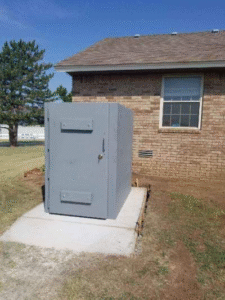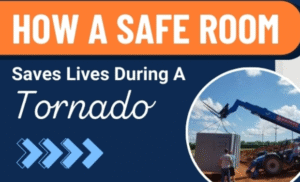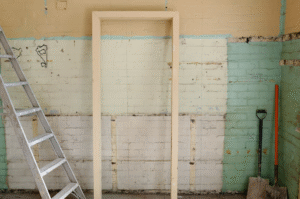Tornadoes may bring sudden chaos, but in Texas, it’s not just the wind you need to worry about; it’s the heat. With temperatures frequently soaring into triple digits, a safe room shelter without proper airflow can quickly become dangerously hot during or after a storm. That’s why safe room ventilation in Texas is not just a comfort feature; it’s a safety essential.
Whether you’re building a compact above-ground safe room or outfitting a larger community storm shelter, ventilation systems can be the difference between security and suffocation during extended emergencies.
Passive vs. Powered Ventilation: What’s the Difference?
Ventilation systems for FEMA-approved safe rooms come in two primary types: passive and powered.
Passive ventilation uses air vents and gravity to circulate air. These systems often include protected intake and exhaust openings that are resistant to flying debris. They’re simple, effective, and require no electricity, ideal for use during power outages caused by severe weather.
Powered ventilation, on the other hand, includes fans and sometimes HEPA filtration. While more complex, these systems provide better airflow in larger storm safe rooms or steel tornado shelters where many people may be gathered for hours. They often come with battery backup systems or can be connected to home generators to ensure continued operation.
Choosing between the two depends on your shelter size, location, and the number of occupants. A small safe room may only need passive airflow, while a storm shelter designed for group use will benefit from powered ventilation to prevent overheating and humidity buildup.
Maintenance and Design Considerations
Even the best ventilation systems need regular checks. Air filters should be inspected and replaced as needed, and vents should be kept clear of dust, debris, or pests. Regular maintenance ensures your tornado shelter stays ready for sudden use.
Proper placement of vents is also crucial. In an above-ground storm shelter, vents are often placed high and low on opposite walls to encourage cross-ventilation. For in-ground models, vent hoods should be raised to prevent water entry during flooding.
Built for More Than Impact
When disaster strikes, it’s not just wind and debris you have to worry about; it’s what happens once you’re inside. Without ventilation, even the most reinforced community storm shelter in Texas can become a trap under the brutal Texas sun. That’s why we believe no safe room is complete without a plan for airflow.
At Safe Rooms US, we help you build FEMA-approved safe rooms that don’t just meet codes, they meet real-life challenges. We offer certified, expertly designed storm-safe rooms with proper ventilation, because we know what’s at stake. Ready to protect your family the right way?
Call now to build for a safer, cooler future.











